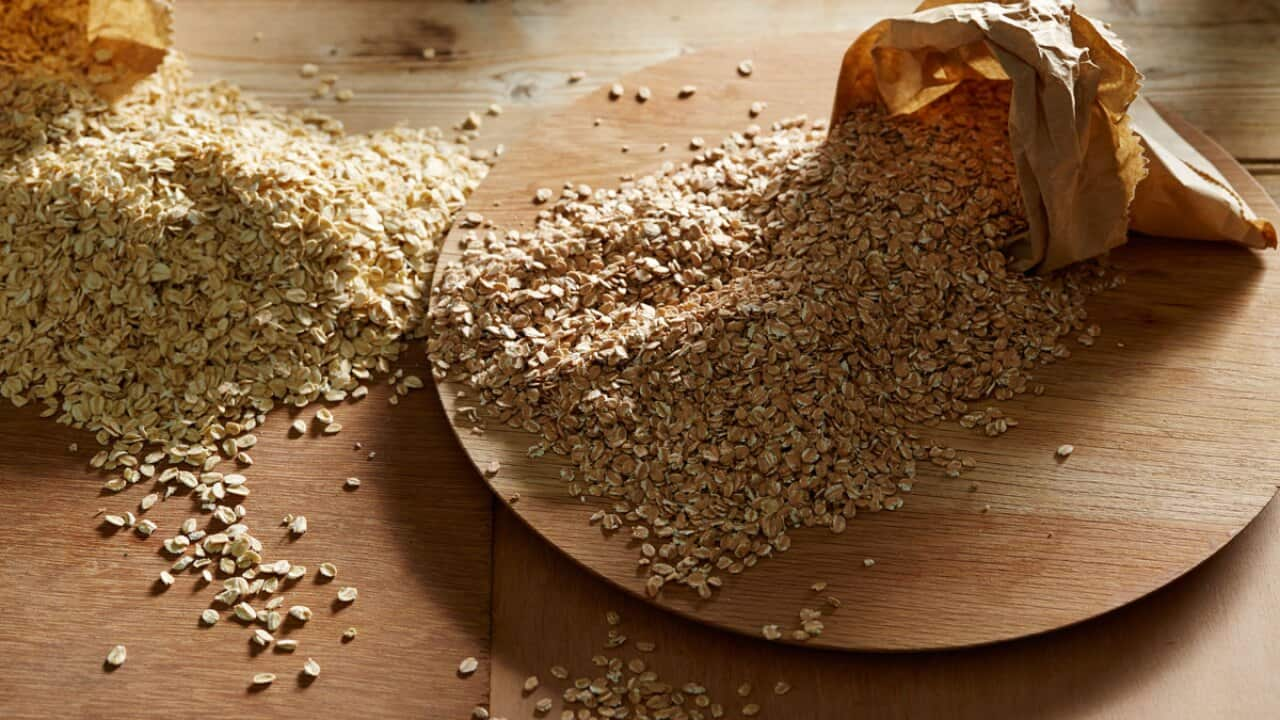Whole grains can be divided into two batches: corn, wheat, rye, oats, rice, barley and millet from the Poaceae family; and amaranth, buckwheat, quinoa, and wild rice, which are edible seeds (or pseudograins) with the same nutritional properties as other grains.
Most people assume that grain equals gluten, but this is only the case for a few grains. “Gluten is the protein in wheat, as well as in certain grains such as spelt, rye and barley,” explains Cassie Mendoza-Jones, . “There are actually plenty of gluten-free grains, like rice, quinoa, buckwheat, oats [read more about the gluten in oats below], millet and amaranth,” she explains.
Whole grains trump refined products made from grains in the nutrition stakes because the processing often means the germ (inner layer) and bran (outer layer) are lost, along with all their health-boosting benefits, leaving behind the starchy, nutrient-lacking endosperm (middle layer).
If you can easily digest grains, there’s a truckload of benefits to be reaped. They are low-GI – good for slow-release energy – and most varieties are full to the hull with B vitamins and complete proteins. “They tonify the body like no other food and they’re grounding, so they nourish your nervous system when you’re feeling frazzled, which is good news for sleep and reviving a depleted body,” adds Mendoza-Jones.
The key is variety – otherwise your body might develop an intolerance – and listening to your body. If you consistently feel bloated, tired or unwell after eating a certain grain, leave it out of your diet for a while to see if there’s a difference in how you feel. “It comes down to finding what works for you, not cutting out an entire food group,” says Mendoza-Jones.
Barley
It’s the perfect, chewy cross between pasta and rice, and is as good for you as it tastes. Barley contains both soluble and insoluble fibres, which provide good food for the friendly bacteria in the large intestine. It also helps lower cholesterol, and is loaded with manganese, selenium, copper and antioxidants (naturally occurring chemicals that fight unwanted free-radicals).
Rice
All rice varieties are relatively low allergenic; plus they’re packed with vitamin B1 (thiamine), which provides the body with energy, boosts heart health and relieves stress. Black rice is rich in fibre and iron (an essential mineral that moves oxygen around the body); wild rice (longer and skinnier than black rice) has twice as much protein as brown rice; while red and brown rice are good sources of manganese and zinc (essential for healthy skin and immune function).
Teff
The new grain on the block is tiny but mighty delicious. Teff is full of fibre, has more calcium than any other grain, contains potassium, protein and is a surprisingly good source of vitamin C. This super grain is also high in resistant starch, which is helpful for managing blood-sugar levels and keeps you feeling full.
Quinoa
This popular little seed is a complete protein (contains all nine amino acids), packed with fibre, and contains folate, iron, magnesium (prevents and manages high blood pressure) and B2 (riboflavin, for energy and antioxidant production).
Spelt
It’s the tough, nutty cousin to wheat, and a good choice as it’s an ancient grain, so it’s usually well tolerated if you can handle gluten, as the gluten is more ‘fragile’. It’s also high in soothing B vitamins, protein, phosphorus (strengthens bones and teeth) and zinc.
Oats
Comforting and nourishing, oats are naturally gluten-free, high in fibre, bursting with manganese (good for healthy skin and bones), and studies have shown that the beta-glucan fibre found in the outer layer of oats is highly beneficial for lowering bad cholesterol.
Amaranth
The small seed isn’t as pretty as the lush flowers from the same plant, but amaranth definitely punches above its weight in nutrients. It’s a complete protein, easy to digest and boasts the highest source of iron of all the grains. There’s also vitamin C (prevents against cardiovascular disease and immune deficiencies), calcium, magnesium and iron.
Buckwheat
Sounds remarkably like wheat, but technically a fruit seed (and related to rhubarb), buckwheat is rich in iron, selenium (a mineral high in antioxidants), zinc and a complete protein. It’s also known for nourishing the heart, preventing gallstones and protecting against childhood asthma.





